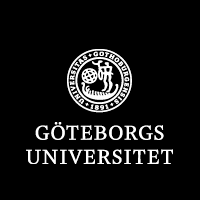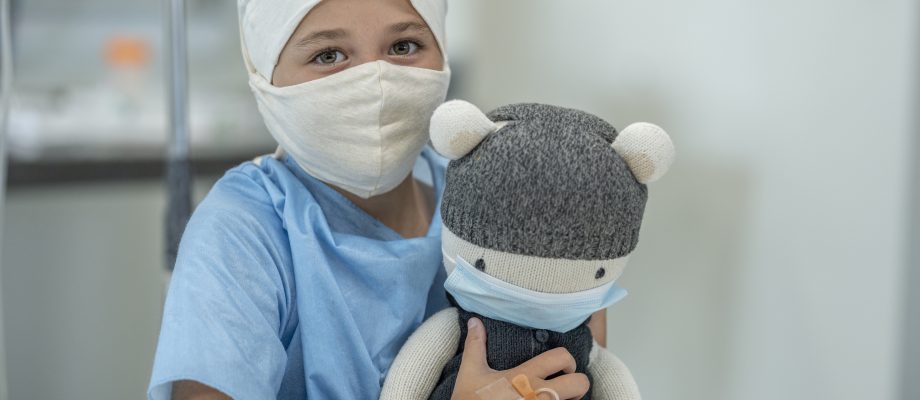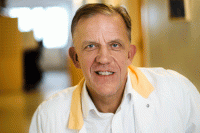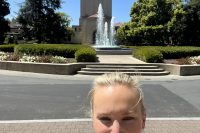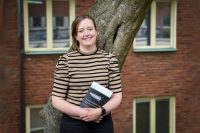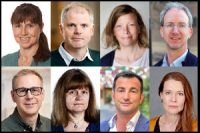NEW STUDY. In collaboration with researchers in the Netherlands and Belgium, researchers at the University of Gothenburg have now shown that overexpression of the gene for ALKAL2 activates a chain of other cancer-driving genes and how this leads to neuroblastoma. The results indicate that increased gene dosage of ALKAL2 may become a new biomarker and open up the potential for treatment with ALK inhibitors for certain forms of childhood cancer.
Neuroblastoma is a heterogeneous cancer. The disease mainly affects young children and is found in both mild and very aggressive forms. Despite improvements in treatments, long-term survival is still low for children with aggressive neuroblastoma. Neuroblastoma occurs in the sympathetic nervous system, which is part of the involuntary nervous system, and can cause tumors in various locations in the body.
Chromosome-level defects
The mechanisms that initiate cancer development in neuroblastoma are largely unknown, but a few cancer-driving genes have been identified. Examples of such oncogenes in neuroblastoma are the receptor for ALK tyrosine kinase and the gene MYCN, when overexpressed.
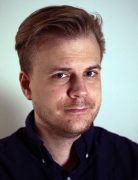
“The genetic defects considered a primary cause in the development of neuroblastoma are found at the chromosome level. Parts of chromosomes can be missing and several different chromosomes can be overexpressed at the same time or each separately,” says Marcus Borenäs, a doctoral student at the University of Gothenburg and researching intern physician at Sahlgrenska University Hospital, who is a shared co-first author of the new study.
Disturbed gene dosage
Patients with a poor prognosis from high-risk neuroblastoma have genetic defects, such as deletion of certain parts from chromosome arms 1p and 11q, more copies of parts from chromosomes 2p and 17q, or overexpression of oncogenic MYCN. Gene expression is thought to be affected when they receive more or fewer copies, which may contribute to the development of neuroblastoma.
“Understanding these underlying molecular mechanisms and placing them in a developmental context is important for understanding how neuroblastoma occurs and how it survives despite aggressive treatment regimens,” said Ruth Palmer, a professor at the Institute of Biomedicine and the last author of the study.
ALKAL2 activated unmutated receptors
Together with colleagues, Ruth Palmer has investigated the function of the protein ALKAL2 since 2015, when the group managed to identify it as a ligand that activates the receptor for the ALK gene. In mutated form, the ALK receptor is a described oncogene in neuroblastoma, but the study shows that the receptor can also contribute to neuroblastoma development in unmutated form.
The study shows that an increased expression of ALKAL2 can activate ALK even if the receptor has no mutation. This leads to growth in cell cultures and to tumor development in a mouse model with a high expression of MYCN.
Chain reaction in the cell nucleus
The effect is that the ALK receptor is activated by the ligand ALKAL2, this enzymatic activity reverses the transcription in the cell nucleus, and many new genes are turned on or off. One of the genes that is turned on is the known oncogene MYCN.
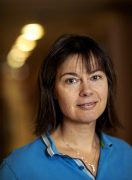
“Interestingly, these genes are located close to each other on chromosome 2. We know that ALKAL2 is at position 2p25, near the end of chromosome 2p. ALK and MYCN are also located on chromosome 2, relatively close, more specifically at positions 2p23 and 2p24, respectively,” says Ruth Palmer.
Together with the geneticist Tommy Martinsson, also a professor at the Institute of Biomedicine, the group has previously reported that about 30 percent of all neuroblastomas have amplification or some overexpression of this part on chromosome 2. There are also reports that there is a link between patients with more copies of chromosome 2 and poorer disease prognosis, and, as such, lower survival.
Possible new treatment
“We know about the major mechanistic events caused by 2p troika overexpression, resulting in illness. Now we have started digging deeper to understand when it happens, that is, at what stage we lose control of cell growth and cancer develops,” says Marcus Borenäs.
In light of this new information, the authors of the article conclude that increased expression of ALKAL2 should also be included as a future biomarker for neuroblastoma. This also opens up the opportunity for new beneficial treatments.
“If there is too much of the ligand ALKAL2 that activates ALK, this can be stopped with ALK inhibitors. Such drugs are already being used successfully today in the treatment of ALK-positive lung cancer. At present, it cannot be ruled out that tumors with overexpression of the 2p troika ALKAL2, ALK and MYCN could be treated with ALK inhibitors,” Ruth Palmer concludes.
The study has been recently published in the EMBO Journal.
Title: ALK ligand ALKAL2 potentiates MYCN-driven neuroblastoma in the absence of ALK mutation; https://www.embopress.org/doi/full/10.15252/embj.2020105784
Authors: Marcus Borenäs, Ganesh Umapathy, Wei-Yun Lai, Dan E Lind, Barbara Witek, Jikui Guan, Patricia Mendoza-Garcia, Tafheem Masudi, Arne Claeys, Tzu-Po Chuang, Abeer El Wakil, Badrul Arefin, Susanne Fransson, Jan Koster, Mathias Johansson, Jennie Gaarder, Jimmy Van den Eynden, Bengt Hallberg and Ruth H Palmer.
TEXT: ELIN LINDSTRÖM
